Yoga for Diabetes: Natural Way to Control Blood Sugar Levels
April 2, 2025 | by paruli6722@gmail.com

Diabetes is a common health condition that affects millions of people worldwide. Yoga for Diabetes can help regulate blood sugar levels, improve insulin sensitivity, and enhance overall well-being. In this article, we will explore the best yoga poses, breathing techniques, and tips for managing diabetes naturally. 🧘♂️✨
🧐 How Does Yoga Help in Diabetes?
Yoga helps in controlling diabetes by:
- Enhancing insulin production 🏥
- Reducing stress and cortisol levels 😌
- Improving metabolism and digestion 🔥
- Boosting blood circulation and organ function 🩸
- Promoting weight loss and physical activity ⚖️
By incorporating yoga into your routine, you can maintain stable blood sugar levels and prevent diabetes-related complications.
🏥 Types of Diabetes and Their Causes
Diabetes is classified into different types, each with distinct causes:
🔹 Type 1 Diabetes
- Autoimmune condition where the body attacks insulin-producing cells.
- Usually diagnosed in children and young adults.
- Requires insulin injections for management.
🔹 Type 2 Diabetes
- More common and linked to insulin resistance.
- Caused by poor diet, lack of exercise, and genetics.
- Can be managed with lifestyle changes and medication.
🔹 Gestational Diabetes
- Occurs during pregnancy due to hormonal changes.
- Increases the risk of developing type 2 diabetes later in life.
- Managed through diet, exercise, and regular monitoring.
🧘♂️ Best Yoga Poses for Diabetes
🌳 Vrikshasana (Tree Pose) for Diabetes
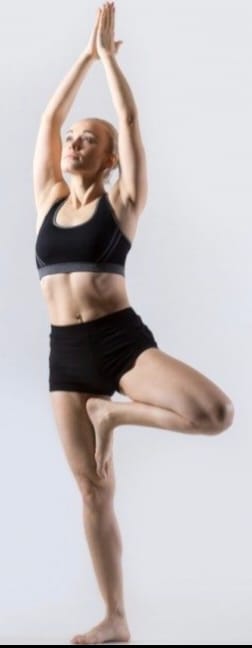
Diabetes is a common metabolic disorder that affects blood sugar levels. Practicing yoga, especially Vrikshasana (Tree Pose), can significantly aid in managing diabetes. This pose enhances balance, concentration, and insulin sensitivity, making it a great addition to a diabetic-friendly lifestyle.
👩🌿 What is Vrikshasana?
Vrikshasana, also known as Tree Pose, is a standing balance posture that mimics the stability and strength of a tree. It strengthens the legs, improves posture, and stimulates the pancreas, helping regulate blood sugar levels effectively.
🧐 How Vrikshasana Helps in Diabetes
Regular practice of Vrikshasana offers several benefits for individuals with diabetes:
- Stimulates the Pancreas 🌱 – Enhances insulin production and function.
- Improves Blood Circulation ❤️ – Helps in better glucose metabolism.
- Enhances Focus and Mental Stability 🧘 – Reduces stress, which is a major contributor to high blood sugar.
- Balances the Nervous System 🧠 – Supports overall metabolic health.
- Strengthens Muscles and Joints 💪 – Helps in maintaining an active lifestyle.
🔢 Step-by-Step Guide to Perform Vrikshasana
➕ Preparations:
- Stand straight on a yoga mat with feet together.
- Keep your arms relaxed at your sides.
✨ Steps:
- Shift Weight to One Leg – Lift your right foot and place it on the inner left thigh.
- Find Your Balance – Keep your left leg strong and stable.
- Join Your Palms in Namaste 🙏 – Raise your hands overhead or keep them at chest level.
- Focus on a Fixed Point – Maintain steady breathing while holding the pose.
- Hold for 20-30 Seconds – Slowly lower your leg and repeat on the other side.
🚀 Precautions and Contraindications
- Avoid if you have vertigo or severe balance issues.
- Those with high blood pressure should avoid raising arms overhead.
- CPeople with recent leg or knee injuries should perform a modified version.
🌿 Additional Tips for Better Results
- Practice early in the morning on an empty stomach.
- Engage your core muscles to enhance stability.
- Combine with Dhanurasana and Bhujangasana for better diabetes control.
- Follow a healthy diet rich in fiber and low in sugar.
📊 Conclusion
Vrikshasana is a simple yet effective yoga pose for diabetes management. With regular practice, it helps improve balance, focus, and blood sugar regulation. Combine this pose with a healthy diet and lifestyle for maximum benefits.
Start practicing today and take a step towards better diabetes control naturally! 💚
✨ Dhanurasana (Bow Pose) for Diabetes: Boost Your Blood Sugar Control 🏹

Diabetes is a chronic metabolic disorder affecting millions worldwide. Yoga, especially Dhanurasana (Bow Pose), plays a crucial role in regulating blood sugar levels naturally. This asana stimulates the pancreas, enhances insulin secretion, and improves digestion, making it highly beneficial for diabetes management.
👩🌿 What is Dhanurasana?
Dhanurasana is a deep backbend yoga pose where the body resembles a bow. The name comes from the Sanskrit word “Dhanur” (Bow), symbolizing strength and flexibility. This asana stretches the spine, stimulates abdominal organs, and boosts circulation, helping in better glucose metabolism.
🧐 How Dhanurasana Helps in Diabetes
Practicing Dhanurasana provides multiple benefits for individuals with diabetes:
- Stimulates the Pancreas 🌱 – Activates pancreatic cells to regulate insulin secretion.
- Improves Digestion 👩🍳 – Enhances metabolic function and reduces bloating.
- Regulates Blood Sugar Levels ⚖️ – Helps balance glucose levels naturally.
- Detoxifies the Body 🧘 – Supports liver and kidney function, aiding detoxification.
- Strengthens Abdominal Organs 🌟 – Promotes better digestion and internal organ function.
🔢 Step-by-Step Guide to Perform Dhanurasana
➕ Preparations:
- Lie flat on your stomach on a yoga mat.
- Keep your arms relaxed by your sides.
✨ Steps:
- Bend the Knees – Bring your heels close to your buttocks.
- Hold the Ankles – Reach back with both hands and grasp your ankles firmly.
- Lift the Chest and Legs – Inhale deeply and raise your chest and thighs off the ground.
- Form a Bow Shape – Pull your legs upward while pushing your chest forward.
- Breathe Deeply – Hold the posture for 20-30 seconds while maintaining steady breathing.
- Release Slowly – Exhale and return to the starting position gently.
🚀 Precautions and Contraindications
- Avoid this pose if you have back injuries or recent abdominal surgery.
- Pregnant women should not practice this pose.
- Individuals with high blood pressure or heart conditions should consult a doctor before attempting it.
🌿 Additional Tips for Better Results
- Practice early in the morning on an empty stomach for maximum benefits.
- Stay hydrated to assist detoxification.
- Combine this pose with Bhujangasana and Ardha Matsyendrasana for enhanced diabetes control.
- Maintain a balanced diet rich in fiber to manage blood sugar effectively.
📊 Conclusion
Dhanurasana is a powerful yoga pose that helps control diabetes naturally. With consistent practice, it improves insulin function, digestion, and overall health. By combining it with a healthy lifestyle and proper diet, you can effectively manage blood sugar levels.
Start practicing today and take a step towards better diabetes control naturally! 💚
✨ Ardha Matsyendrasana (Half Lord of the Fishes Pose) for Diabetes ✨

Diabetes is a common metabolic disorder that affects millions worldwide. Regular practice of yoga, especially Ardha Matsyendrasana (Half Lord of the Fishes Pose), can help manage blood sugar levels effectively. This asana stimulates the pancreas, improves digestion, and enhances insulin sensitivity.
👩🌿 What is Ardha Matsyendrasana?
Ardha Matsyendrasana is a twisting yoga pose that offers numerous health benefits. The name is derived from the sage Matsyendranath, a yoga master. This asana is known for its spinal twist, which massages internal organs and improves circulation.
🧐 How Ardha Matsyendrasana Helps in Diabetes
Practicing this asana provides several benefits for individuals with diabetes:
- Stimulates the Pancreas 🌱 – Helps in better insulin secretion.
- Improves Digestion 👩🍳 – Enhances metabolism and reduces bloating.
- Regulates Blood Sugar Levels ⚖️ – Aids in maintaining glucose balance.
- Detoxifies the Body 🧛 – Removes toxins, leading to better organ function.
- Enhances Liver and Kidney Functions 🌟 – Supports overall detoxification.
🔢 Step-by-Step Guide to Perform Ardha Matsyendrasana
➕ Preparations:
- Sit in a comfortable position on a yoga mat.
- Keep your spine erect and legs extended forward.
✨ Steps:
- Bend the Right Leg – Place the right foot outside the left thigh.
- Fold the Left Leg – Bend the left leg and bring the heel close to the right hip.
- Twist the Torso – Place the right hand behind and bring the left elbow over the right knee.
- Deep Breathing – Hold the posture for 30 seconds to 1 minute while breathing deeply.
- Repeat on the Other Side – Release the pose slowly and repeat on the left side.
🚀 Precautions and Contraindications
- Avoid if you have spinal injuries or recent surgery.
- Pregnant women should avoid deep twists.
- Practice under the guidance of an expert if you are a beginner.
🌿 Additional Tips for Better Results
- Practice early in the morning on an empty stomach.
- Maintain proper hydration to help detoxify the body.
- Combine with other yoga poses like Bhujangasana and Dhanurasana for better results.
- Follow a balanced diet with fiber-rich foods to manage blood sugar effectively.
📊 Conclusion
Ardha Matsyendrasana is a powerful yoga pose for diabetes management. With regular practice, it can help improve insulin function, digestion, and overall well-being. Combine it with a healthy lifestyle and dietary modifications for maximum benefits.
Start practicing today and take a step towards natural diabetes control! 💚
🧘♂️ Vajrasana (Thunderbolt Pose) ⚡ for Diabetes: A Simple Yet Powerful Yoga Pose
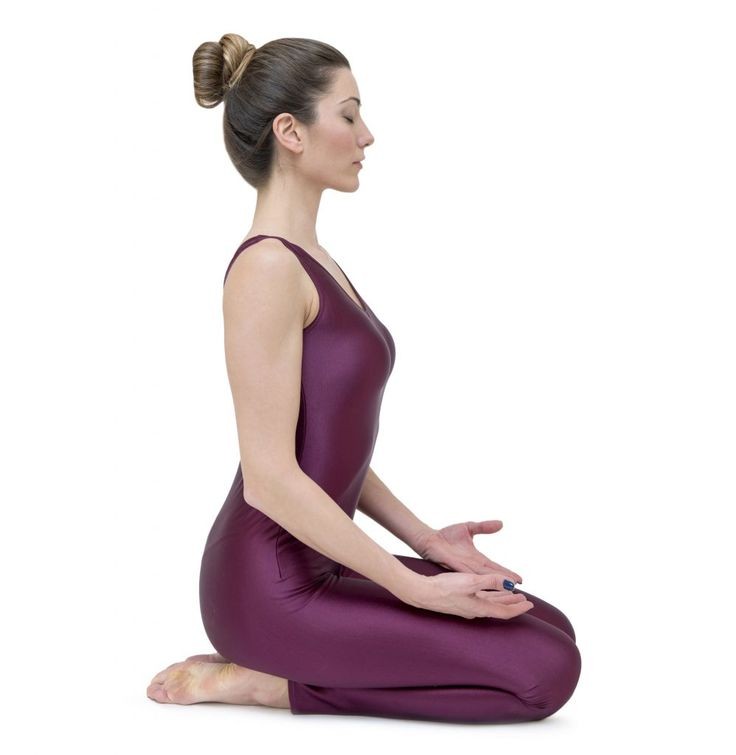
Managing diabetes naturally is becoming increasingly popular—and Vajrasana stands out as one of the best yoga poses to aid digestion, control blood sugar, and improve overall wellness.
Let’s explore how this simple seated pose can help you on your journey to better health. 👇
🔍 What is Vajrasana?
Vajrasana also known as Thunderbolt Pose or Diamond Pose, is a kneeling yoga posture. Unlike most yoga asanas that should be practiced on an empty stomach, Vajrasana is safe to do right after meals—making it especially beneficial for diabetics. 🙌
💡 Benefits of Vajrasana for Diabetes
Here’s how Vajrasana helps in managing diabetes naturally:
1. 🩸 Regulates Blood Sugar Levels
Practicing Vajrasana improves pancreatic function, helping in better insulin secretion, which is crucial for people with type 2 diabetes.
2. 🍽️ Enhances Digestion
It calms the stomach and aids digestion, preventing post-meal sugar spikes. Perfect to do after lunch or dinner!
3. 🧠 Reduces Stress & Anxiety
Helps relax the mind, reduces cortisol levels (stress hormone), and balances blood glucose indirectly.
4. 🫀 Improves Blood Circulation
Stimulates lower body blood flow without putting pressure on the heart—great for diabetics who face poor circulation.
5. 💪 Strengthens Pelvic Muscles
Improves posture and tones muscles around the abdomen and hips, supporting metabolic functions.
🧘♀️ How to Do Vajrasana (Step-by-Step)
🕒 Time: 5–15 minutes (after meals)
✅ Step 1: Kneel Down
Sit on your knees with your legs folded and toes touching. Keep heels apart or together as per comfort.
✅ Step 2: Sit Back Gently
Lower your buttocks to rest on your heels. Keep your spine straight and head relaxed.
✅ Step 3: Place Hands on Thighs
Place palms facing down on your thighs. Relax your shoulders. Keep breathing normally.
✅ Step 4: Close Eyes & Focus
Close your eyes and focus on your breath. Stay in this pose for a few minutes.
✅ Step 5: Release Slowly
To come out, slowly lift your hips and stretch your legs forward.
⚠️ Precautions
🚫 Avoid if you have:
- Severe knee or ankle pain
- Arthritis in knees
- Recent surgery on legs or back
✨ Tip: Use a soft cushion or yoga block under your hips for added comfort.
📅 How Often to Practice?
✔️ Do Vajrasana daily for 10–15 minutes after meals
✔️ Combine with other yoga poses and pranayama for best results (like Kapalbhati or Anulom Vilom)
🌿 Final Thoughts
Vajrasana is a powerful, beginner-friendly yoga pose that brings immense relief to those with diabetes. Just a few minutes daily can enhance digestion, stabilize blood sugar, and calm the mind. 💚
So, next time after your meal—don’t rush to the couch. Sit in Vajrasana instead and give your body the gift of wellness. 🌟
📌 FAQ: Vajrasana & Diabetes
Q: Can Vajrasana cure diabetes?
🔹 Not a cure, but it helps manage symptoms and supports a healthier lifestyle.
Q: Is it safe for seniors with diabetes?
🔹 Yes, but use support like cushions and avoid if there’s knee pain.
Q: When is the best time to do Vajrasana?
🔹 Right after meals—breakfast, lunch, or dinner.
🧘♂️ Setu Bandhasana (Bridge Pose) 🌉 for Diabetes: A Gentle Backbend for Blood Sugar Balance
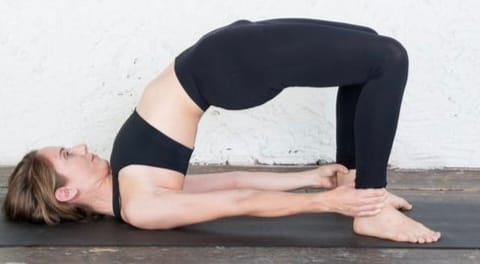
Living with diabetes doesn’t have to mean living with limitations. Incorporating yoga asanas like Setu Bandhasana (Bridge Pose) into your daily routine can naturally support blood sugar control, digestion, and energy levels. 💪🌿
Let’s dive into how this powerful yet gentle backbend can help you manage diabetes more effectively. 👇
🔍 What is Setu Bandhasana?
Setu Bandhasana or Bridge Pose, is a supine (lying-down) backbend that resembles a bridge—hence the name. It activates the thyroid gland, stretches the spine, and stimulates internal organs, making it a great pose for diabetics.
💡 Benefits of Setu Bandhasana for Diabetes
Here’s why Bridge Pose is highly recommended for diabetes management:
1. 🧪 Stimulates Pancreas
The gentle pressure on the abdomen stimulates the pancreas, improving insulin secretion and blood sugar regulation.
2. 🧠 Reduces Stress & Fatigue
This asana calms the mind, lowers cortisol (stress hormone), and reduces emotional triggers for blood sugar spikes.
3. 🫀 Improves Blood Circulation
Opens the chest and boosts circulation throughout the body, which helps in better glucose absorption by cells.
4. 🧍♀️ Activates the Thyroid
Balances thyroid function, which is directly related to metabolism and sugar levels.
5. 🧘♀️ Strengthens Core & Back Muscles
Tones the lower back, glutes, and core—supporting a healthy weight, crucial for diabetics.
🧘♂️ How to Do Setu Bandhasana (Step-by-Step)
🕒 Time: 3–5 minutes | Best time: Morning or evening (empty stomach)
✅ Step 1: Lie Down Comfortably
Lie flat on your back with arms by your sides and palms facing down.
✅ Step 2: Bend Your Knees
Fold your knees and bring your feet close to your hips. Keep feet hip-width apart.
✅ Step 3: Lift Your Hips
Inhale and slowly lift your hips and back off the mat. Keep your shoulders and arms firmly on the ground.
✅ Step 4: Hold the Pose
Hold the bridge shape for 30 seconds to 1 minute. Breathe normally.
✅ Step 5: Lower Down Gently
Exhale and slowly bring your spine down vertebra by vertebra.
⚠️ Precautions
🚫 Avoid if you have:
- Severe back or neck pain
- Recent spinal injury
- High blood pressure (without guidance)
✨ Tip: Place a yoga block or cushion under your lower back for added support if you’re a beginner.
📅 How Often to Practice?
✔️ Practice 3–5 rounds daily
✔️ Combine with other poses like Vajrasana or Paschimottanasana for enhanced benefits
✔️ Practice on an empty stomach or at least 4–5 hours after a meal
🌿 Final Thoughts
Setu Bandhasana is more than just a backbend—it’s a bridge to better health. 🌈
By adding this asana to your yoga practice, you not only support your endocrine system but also improve mental and physical well-being—all of which are vital for managing diabetes.
So roll out your mat, rise like a bridge, and flow toward balance and wellness! 🌉💚
📌 FAQ: Setu Bandhasana & Diabetes
Q: Can beginners do Setu Bandhasana?
🔹 Absolutely! Start slowly and use props for support.
Q: Is it better in the morning or evening?
🔹 Both are good, but make sure your stomach is empty.
Q: How long should I hold the pose?
🔹 Start with 30 seconds, gradually increase to 1–2 minutes.
🌬️ Best Pranayama (Breathing Techniques) for Diabetes
✅ Kapalbhati Pranayama (Skull-Shining Breath) 💨 for Diabetes: Cleanse, Control & Energize
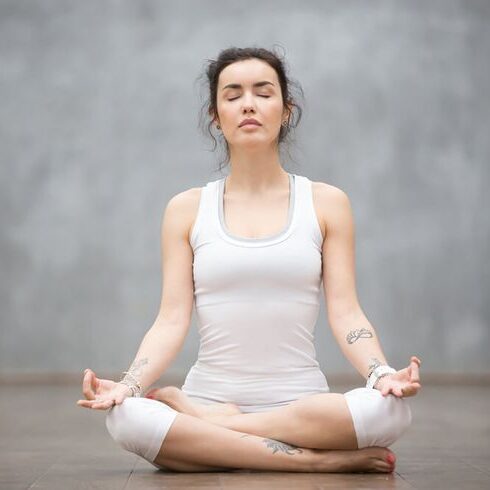
If you’re looking for a powerful breathing technique to help manage diabetes naturally, look no further than Kapalbhati Pranayama. This ancient yogic kriya is more than just a breathing exercise—it’s a complete internal detox that helps stimulate the pancreas, improve metabolism, and energize the entire body. ⚡
Let’s explore how Kapalbhati can support diabetes management and boost overall health. 👇
🔍 What is Kapalbhati Pranayama?
Kapalbhati means “shining forehead”, referring to the clarity and glow that comes with regular practice. It is a cleansing technique (shatkarma) where the focus is on active exhalation and passive inhalation.
💨 Think of it as a natural pump that clears toxins, boosts digestion, and energizes internal organs—including the pancreas.
💡 Benefits of Kapalbhati for Diabetes
Here’s how Kapalbhati Pranayama helps in controlling diabetes naturally:
1. 🩸 Stimulates the Pancreas
The strong abdominal contractions stimulate insulin-producing beta cells, helping regulate blood sugar levels.
2. 🔥 Boosts Metabolism
Fires up your metabolism, which aids in weight loss—a key factor in managing type 2 diabetes.
3. 🧠 Reduces Stress Hormones
Lowers stress and anxiety, reducing cortisol levels that can otherwise spike blood glucose.
4. 🧽 Detoxifies the System
Flushes out toxins from the lungs and abdominal organs, improving overall organ function.
5. 💪 Tones Abdominal Muscles
Tones belly fat and strengthens the core, promoting better digestion and energy flow.
🧘♂️ How to Practice Kapalbhati (Step-by-Step)
🕒 Time: Morning on empty stomach | Duration: 5–15 minutes
✅ Step 1: Comfortable Sitting Position
Sit in Padmasana or Sukhasana (cross-legged). Keep your back straight and shoulders relaxed.
✅ Step 2: Deep Inhale
Take a deep breath in through your nose.
✅ Step 3: Active Exhalation
Forcefully exhale through your nose by pulling your navel in toward your spine. Don’t focus on inhaling; it happens passively.
✅ Step 4: Rhythmic Repetition
Do 30–60 strokes per round, rest for a few seconds, then repeat for 3–5 rounds.
⚠️ Precautions
🚫 Avoid or consult a doctor if you have:
- High blood pressure
- Heart disease
- Hernia or recent abdominal surgery
- Epilepsy or severe anxiety
✨ Tip: Always learn Kapalbhati from a certified yoga teacher before starting on your own.
📅 How Often Should You Practice?
✔️ Daily in the morning on an empty stomach
✔️ Start with 3–5 minutes and gradually increase to 15 minutes
✔️ Combine with other pranayamas like Anulom Vilom and yoga asanas like Setu Bandhasana for enhanced results
🌿 Final Thoughts
Kapalbhati is not just breathwork—it’s inner cleansing. 💫
This powerful pranayama helps restore balance to your body’s systems, especially the endocrine and digestive systems, both of which play a crucial role in managing diabetes.
Practice regularly, breathe consciously, and let your body shine from within. ✨🧘♀️
📌 FAQ: Kapalbhati & Diabetes
Q: Can Kapalbhati cure diabetes?
🔹 It can help manage and improve symptoms, especially for type 2 diabetes when combined with lifestyle changes.
Q: How many strokes are ideal per minute?
🔹 Start with 60 strokes per minute, gradually increasing with comfort and experience.
Q: Can I do Kapalbhati after meals?
🔹 No. Practice only on an empty stomach, preferably in the morning.
✅ Anulom Vilom (Alternate Nostril Breathing) 🍃 for Diabetes: Balance Your Breath, Balance Your Sugar
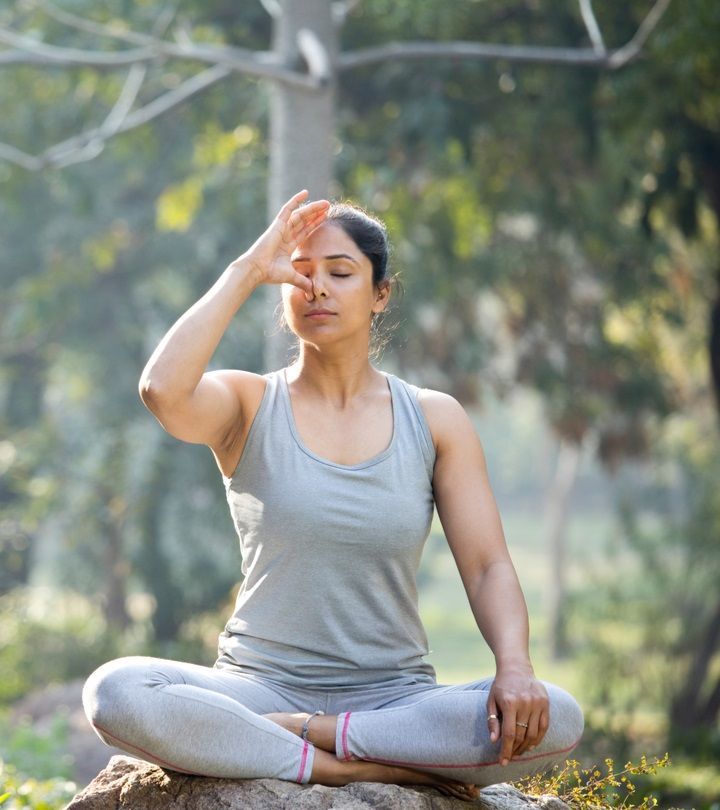
Diabetes management isn’t just about medication—it’s also about balance. And when it comes to balancing the body and mind, few practices are as effective and calming as Anulom Vilom Pranayama, also known as Alternate Nostril Breathing.
Let’s explore how this gentle yet powerful breathing technique can support people with diabetes. 👇
🔍 What is Anulom Vilom?
Anulom Vilom is a yogic breathing technique where you breathe in through one nostril and out through the other in an alternate rhythm. It helps in balancing the left and right hemispheres of the brain, calming the nervous system, and improving oxygen flow.
🍃 “Anulom” means with the natural flow
🍃 “Vilom” means against the natural flow
Together, they bring balance and harmony to your body.
💡 Benefits of Anulom Vilom for Diabetes
Here’s how this calming pranayama supports diabetes control:
1. 🧠 Reduces Stress & Anxiety
Stress is a major trigger for high blood sugar. Anulom Vilom calms the nervous system and reduces cortisol, the stress hormone.
2. 💓 Improves Oxygen Supply
Better oxygenation of organs, especially the pancreas, helps in more effective insulin production.
3. 🔄 Balances Hormonal Function
Supports the endocrine system, including thyroid and pancreas, essential for blood sugar regulation.
4. 🌬️ Cleanses Energy Channels (Nadis)
Removes blockages from nadis (energy channels), improving the flow of prana (life force)—which boosts metabolism and immunity.
5. 🩸 Stabilizes Blood Pressure
Diabetics often suffer from hypertension. Anulom Vilom helps regulate blood pressure, improving overall cardiovascular health.
🧘♂️ How to Practice Anulom Vilom (Step-by-Step)
🕒 Time: 5–15 minutes | Best time: Morning or Evening (empty stomach)
✅ Step 1: Sit Comfortably
Sit in Padmasana, Sukhasana, or on a chair with your spine straight. Relax your body.
✅ Step 2: Use Right-Hand Vishnu Mudra
Fold index and middle fingers, keeping thumb and ring/little finger free.
✅ Step 3: Start with the Left Nostril
- Close your right nostril with your thumb
- Inhale slowly through your left nostril 🫁
- Close the left nostril with your ring finger
- Exhale through the right nostril
- Then inhale through the right, and exhale through the left
➡️ That’s one round.
✅ Step 4: Repeat Slowly
Do 5 to 10 minutes of slow, relaxed breathing. Focus on your breath and keep your eyes closed.
⚠️ Precautions
🚫 Avoid or modify if:
- You feel dizzy or light-headed
- You have severe breathing issues (consult a doctor first)
- You are in an extremely cold environment
✨ Tip: Practice in a calm space and stay consistent for best results.
📅 How Often Should You Practice?
✔️ Practice daily for 10–15 minutes
✔️ Best when done in the morning or before bed
✔️ Pair with Kapalbhati or Vajrasana for a complete diabetes-friendly yoga routine
🌿 Final Thoughts
Anulom Vilom is a gift of breath, balance, and healing. 🍃
For those living with diabetes, this pranayama offers a natural, medication-free way to lower stress, improve oxygenation, and restore the body’s inner balance.
Start slow, breathe deeply, and feel the calm ripple through your system. Your mind and body will thank you! 💚
📌 FAQ: Anulom Vilom & Diabetes
Q: Can Anulom Vilom alone manage diabetes?
🔹 It supports diabetes management, but should be combined with proper diet, exercise, and medical care.
Q: Can I do it after eating?
🔹 No, practice on an empty stomach or after 4–5 hours of eating.
Q: How long before I see results?
🔹 You may notice calmness and better energy in a few days; blood sugar improvement with regular practice over weeks.
✅ Bhastrika Pranayama (Bellows Breath) 🔥 for Diabetes: Ignite Your Inner Fire for Sugar Control
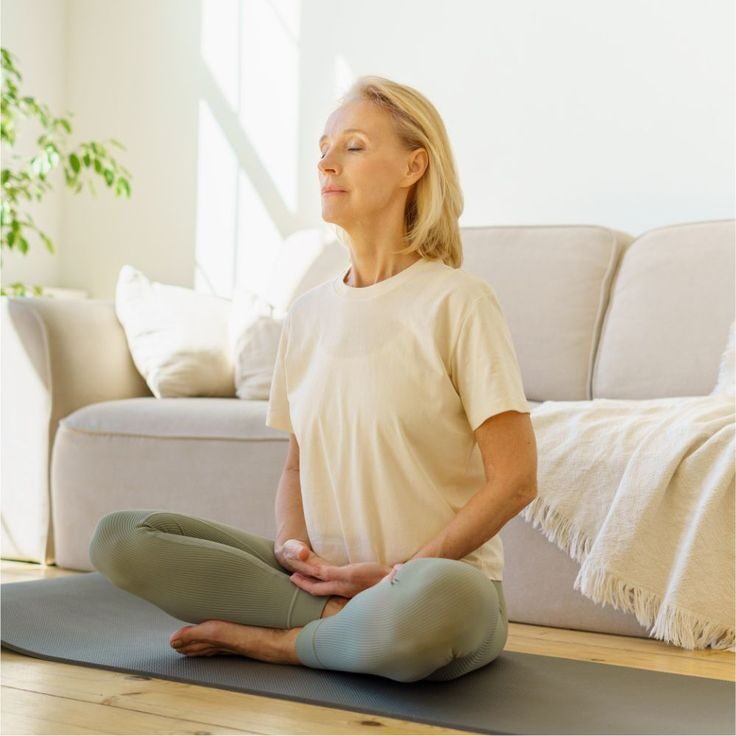
Looking for a powerful, energizing practice to manage your diabetes naturally? Meet Bhastrika Pranayama—the Bellows Breath. Just like a blacksmith’s bellows fan the fire, this pranayama activates your internal organs, boosts oxygen supply, and kickstarts your metabolism. ⚡
Let’s explore how this fiery breathwork helps you gain control over your blood sugar levels. 👇
🔍 What is Bhastrika Pranayama?
Bhastrika means “bellows”, and this breathing technique mimics the action of rapid, forceful inhalation and exhalation—generating heat, boosting energy, and revitalizing the body.
🔥 It’s known for purifying the nervous system, strengthening the lungs, and stimulating the pancreas, making it an excellent practice for those managing diabetes.
💡 Benefits of Bhastrika Pranayama for Diabetes
Here’s how this energizing breathwork can support people living with diabetes:
1. 🩸 Stimulates the Pancreas
The strong, rhythmic breath movements massage internal organs, especially the pancreas, enhancing insulin secretion.
2. 🔥 Boosts Metabolism & Energy
Generates internal heat, burns toxins and excess fat, and improves metabolic function—vital for sugar control.
3. 🧠 Reduces Mental Fatigue & Brain Fog
Improves oxygen supply to the brain, helping with clarity, alertness, and reducing stress-related sugar spikes.
4. 🫁 Strengthens Lungs & Respiratory Muscles
Improves oxygenation and detoxification, which supports the immune system and enhances overall vitality.
5. 💓 Supports Heart Health
Balances blood pressure and heart rate—important since diabetes often comes with cardiovascular risks.
🧘♂️ How to Practice Bhastrika Pranayama (Step-by-Step)
🕒 Best Time: Morning | Duration: 3–5 minutes | Practice on an empty stomach
✅ Step 1: Sit in a Comfortable Position
Sit in Padmasana, Sukhasana, or Vajrasana with a straight spine and relaxed body.
✅ Step 2: Deep Inhale
Inhale forcefully and deeply through your nose, expanding your chest and abdomen.
✅ Step 3: Forceful Exhale
Exhale with equal force, pulling your belly in. Both inhale and exhale should be loud and energetic.
➡️ Maintain a rhythmic pace. Begin with 10 breaths per round.
✅ Step 4: Rest Between Rounds
Pause after every 10–15 breaths. Relax and breathe normally. Do 3–5 rounds total.
⚠️ Precautions
🚫 Avoid or consult your doctor if you have:
- High blood pressure
- Heart issues
- Epilepsy or seizures
- Recent surgery or hernia
✨ Tip: Start slow (1–2 minutes), and increase gradually as your stamina builds.
📅 How Often Should You Practice?
✔️ Practice daily in the morning
✔️ 3–5 minutes per day is effective
✔️ Combine with Anulom Vilom or Kapalbhati for best results in diabetes management
🌿 Final Thoughts
Bhastrika is breath with power. 💥
It energizes the body, purifies the mind, and ignites your digestive fire—making it a great addition to any diabetic lifestyle routine. Along with diet, movement, and medication, this breathing practice can bring balance and transformation from within.
So sit tall, breathe deep, and let the fire within you burn away stress, toxins, and imbalance. 🔥🧘♀️
📌 FAQ: Bhastrika & Diabetes
Q: Is Bhastrika suitable for beginners?
🔹 Yes, but start slow—around 10 breaths per round and build up with time.
Q: Can it replace medication?
🔹 No, but it’s a supportive therapy. Always follow your doctor’s advice.
Q: What’s the difference between Kapalbhati and Bhastrika?
🔹 Kapalbhati focuses on active exhalation, while Bhastrika uses both active inhale & exhale.
🚶♂️ Importance of Physical Activity for Diabetes
Apart from yoga, staying active is essential for diabetes management:
- Walking 🏃♂️ – Helps control blood sugar and improve circulation.
- Strength Training 🏋️♂️ – Increases insulin sensitivity and muscle health.
- Stretching Exercises 🤸♂️ – Enhances flexibility and reduces stiffness.
- Aerobic Exercises 🚴♂️ – Boosts cardiovascular health and metabolism.
Engaging in regular physical activities along with yoga enhances overall health and diabetes control.
🧘♂️ Yoga for Diabetes: Natural Way to Control Blood Sugar Levels
🌿 Home Remedies (Gharelu Upchar) to Support Blood Sugar Management Naturally
Along with regular yoga and pranayama, some time-tested natural remedies can help manage diabetes more effectively. These simple home tips—easily found in your kitchen or garden—may improve insulin sensitivity, aid digestion, and reduce blood glucose levels over time. 🍃
🍀 1. Fenugreek Seeds (Methi Dana)
How to use: Soak 1 tsp of fenugreek seeds in water overnight. Drink the water and chew the seeds on an empty stomach in the morning.
Why: Fenugreek contains soluble fiber that slows down sugar absorption and improves glucose tolerance.
🥒 2. Bitter Gourd Juice (Karela Juice)
How to use: Drink 1/4 to 1/2 cup of fresh karela juice in the morning, 3–4 times a week.
Why: Bitter gourd contains polypeptide-p, an insulin-like compound that helps lower blood sugar naturally.
🌿 3. Neem Leaves
How to use: Chew 4–5 tender neem leaves in the morning or take neem powder with warm water.
Why: Neem has antidiabetic and purifying properties that may improve insulin receptor sensitivity.
🌱 4. Tulsi (Holy Basil) Leaves
How to use: Chew 2–3 fresh leaves or drink tulsi water (steeped in hot water) in the morning.
Why: Tulsi helps in reducing blood sugar and oxidative stress in diabetic patients.
💧 5. Cinnamon Water (Dalchini)
How to use: Boil 1 tsp cinnamon in 2 cups of water. Let it cool and drink daily.
Why: Cinnamon helps improve insulin sensitivity and slows down carbohydrate breakdown.
🍋 6. Amla Juice (Indian Gooseberry)
How to use: Mix 2 tsp amla juice with warm water and drink on an empty stomach.
Why: Amla is rich in Vitamin C and antioxidants, helping the pancreas function better.
🍵 7. Green Tea or Herbal Teas
How to use: Replace your regular tea with green tea, cinnamon tea, or bitter gourd tea.
Why: These herbal teas help boost metabolism and reduce blood sugar spikes after meals.
🧂 8. Avoid White Sugar & Refined Foods
Tip: Replace white sugar with natural sweeteners like stevia or jaggery (in moderation).
Why: Refined carbs and sugars can cause sudden blood glucose spikes. Opt for whole grains, fruits, and high-fiber foods.
💧 9. Stay Hydrated
Tip: Drink at least 2.5–3 liters of water per day. Add cucumber, mint, or lemon for extra benefit.
Why: Proper hydration supports kidney function, flushing out excess glucose through urine.
🚶 10. Post-Meal Walking (Light Activity)
Tip: Walk for 10–15 minutes after lunch and dinner.
Why: A light walk helps in lowering blood sugar spikes and improves digestion.
🥗 Diet & Lifestyle Tips for Managing Diabetes
Yoga is most effective when combined with a healthy lifestyle. Follow these tips for better results:
✅ Eat fiber-rich foods like fruits, vegetables, and whole grains 🍎🥦 ✅ Avoid sugary and processed foods 🚫🍩 ✅ Stay hydrated and drink plenty of water 💧 ✅ Exercise regularly and stay active 🚴♂️🏃♀️ ✅ Get enough sleep and manage stress 🛌😴
🎯 Conclusion
Yoga is a powerful tool for managing diabetes naturally. By practicing these yoga poses and pranayama techniques regularly, you can improve insulin sensitivity, reduce stress, and maintain a healthy lifestyle. Start your yoga journey today and take control of your health! 🌿💪
👉 Have you tried yoga for diabetes? Share your experience in the comments below! 👇
RELATED POSTS
View all



